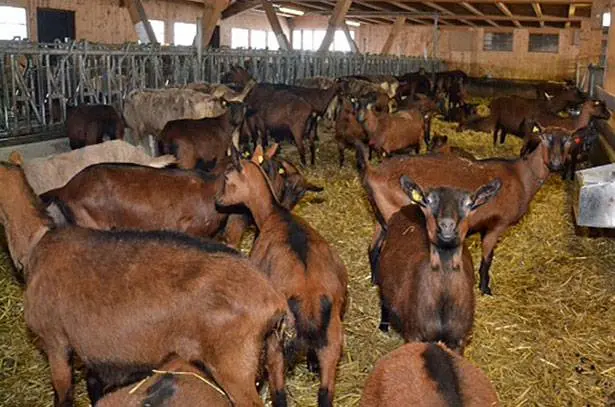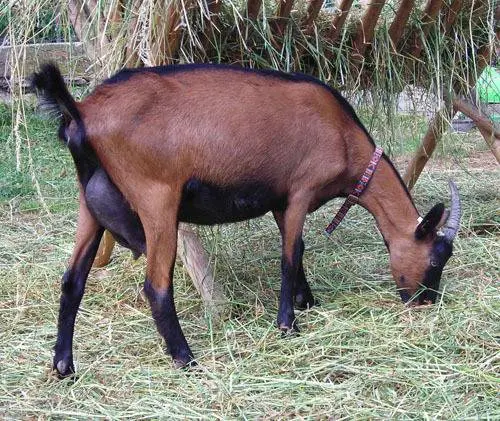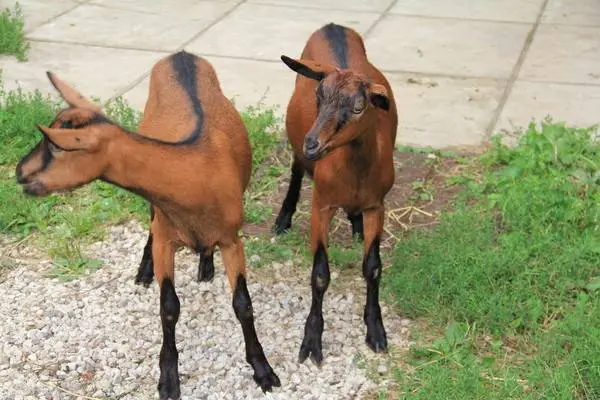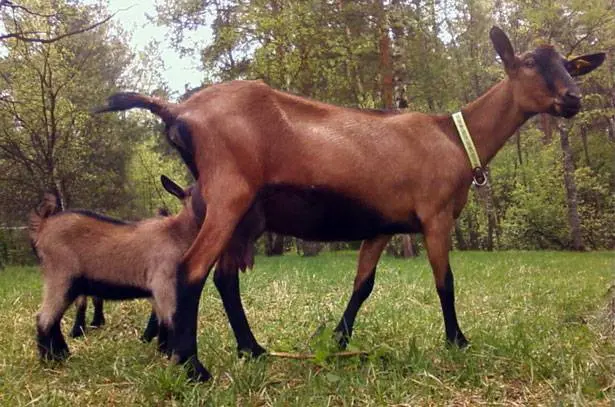Contents
The unpretentiousness and small size of goats makes these animals attractive for breeding in the backyard. The main advantage is hypoallergenic milk with excellent nutritional qualities. To improve species characteristics, breeders have been breeding new breeds for many years. Czech scientists did not stand aside either.

Description
The ancestors of this breed are French Alpine and Swiss Alpine, plus local breeds of goats. Due to this selection, the productivity characteristics of local goats were improved. The Czech goat breed has become an independent species with its own distinctive features.
You can understand the description of the breed from the photo.

Species characteristics:
- The coat color is brown, it can be of different color intensity from milk chocolate to brown;
- Alpiec admixture gave a black stripe along the spine and black socks;
- The main distinguishing feature of the breed is the presence of black triangles behind the ears;
- The weight of the female is from 50 to 55 kg, the male is 70-80 kg;
- A large udder with two teats is silky to the touch, in the milked state – shapeless with folds;
- Czech goats have good intellectual abilities: they respond to their nickname, they can even carry out some of the owner’s commands.
The productivity of the Czech breed
The Czech breed has a predominantly dairy value. The milking period is about 10 months a year. Young goats give about a ton of milk per year, older animals, with the right content, are able to achieve a result of more than 2 tons per year.
For a day you can get from 2 to 4 liters. The milk of Czech goats is not too fat – only 3,5%, the protein in it is 3%.
The consistency is more like cream. The advantage of this milk over cow’s milk is in its hypoallergenic qualities, it is much better absorbed. In baby food, these properties are of undeniable value.

Maintenance and care
Keeping Czech goats is not as difficult as it might seem. The main thing is to provide normal living and feeding conditions.
The room
The size of the room should be such that about 4 m2 is allocated per individual. A prerequisite for keeping ungulates is a warm floor. To do this, you can organize a bed of straw or elevated flooring from the boards. The room temperature in the cold season should be at least +5 degrees. Czech goats are very clean, so it is important to ensure the cleanliness of the premises where they are kept.
In addition, the color of the wool attracts blood-sucking insects to goats in hot weather.

Food
Goats of the Czech breed are not whimsical in nutrition. The basis of their diet is: in summer – grass and shoots of trees and shrubs, and in winter – hay. For a variety of nutrition in the winter, you can resort to compound feed, vegetables, vegetable food waste. Salt can be added little by little to water or given separately. The most natural for these animals is roughage, such as hay, so it should always be in abundance.
Newborn goats feed on mother’s milk. Feeding is continued until the age of one month, then transferred to regular food, combining it with milk from a bottle or a mixture. To strengthen the weakest young animals, raw eggs are given twice a week. However, you need to be sure of the quality of these eggs.

Breeding the Czech breed
Purebred breeding is not necessary at all. One breeding Czech goat is able to improve the quality of the offspring of outbred girlfriends. However, the taste of Czech breed milk can only be produced from purebred animals. In addition, purebred Czech goats can bring not only milk, but also a good income from the sale of offspring.

Crossbreeding Czech goats with another breed
For productivity, thoroughbred goats are often crossed with simple goats. Breeders, as creative people, sometimes cross representatives of different species. This is exactly what the owners of two breeds from Khakassia did. They mixed the Czech and Saanen goats. This happened out of necessity, since there was no pair of Czech goats from “our own”. The result pleased the owners: the goats are resistant to cool climates and are very productive. In addition, they bring strong offspring in the form of triplets every lambing. The color of the short dense coat turned out to be cream.
You can admire the graceful body and noble color of the Czech breed when watching the following video:









